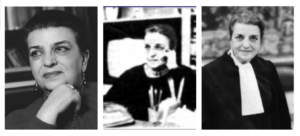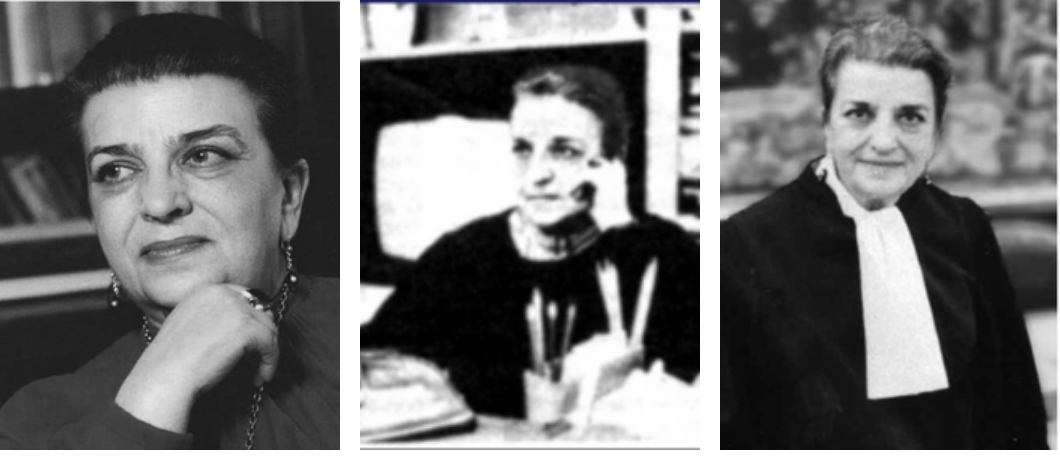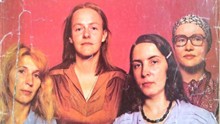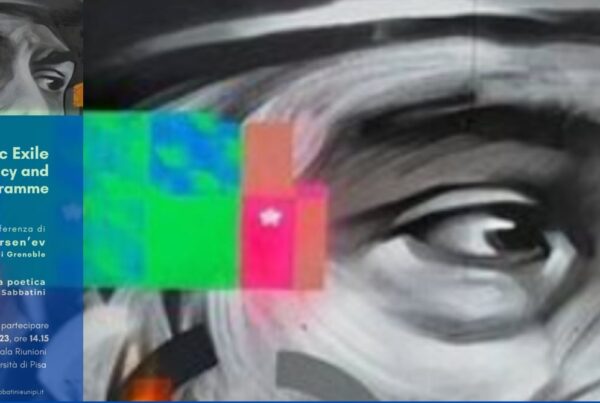
Dina Kaminskaia (Ekaterinoslav, 1919 – Falls Church, Virginia, 2006)
Ekaterinoslav, 1919-Virginia, 2006
Dina Isaakovna Kaminskaia was one of the most influential and active Soviet lawyers, who worked to defend human rights in the USSR and a member of the Moscow Helsinki Group (Moskovskaia Khelsinskaia Gruppa). She was born in 1919 in Ekaterinoslav (now Dnipro, Ukraine) into a wealthy Jewish family. In 1937 she attended the Moscow Law Institute (Moskovskii iuridicheskii institut) and graduated in 1941. She became a member of the College of Lawyers of Moscow (Moskovskaia gorodskaia kollegiia advokatov) and practiced law for 37 years. She wrote about her choice of career in her memoirs: “I am grateful that, as young as I was then, a good dose of sixth sense – a certain combination of education and intuition – helped me choose the profession that meets a basic need of my nature: the work that allowed me to defend so many people from the arbitrary and often cruel power of the Soviet state”(Kaminskaia 1982: 13). For Kaminskaia, exercising her profession responded to a moral imperative that found its natural fulfillment in the defense of human rights: “The Soviet dissidents I defended were not terrorists or extremists. They were people fighting within the limits of the law to induce the state to respect legitimate human rights. I believe they were fighting, openly and with a sense of duty, for something that we lawyers should be fighting against in the very nature of our profession. By defending them, I felt that I too was somehow participating in that struggle” (Kaminskaia 1982: 49).
During her career she defended numerous dissidents who fought for human rights, including V. Bukovskii, Iu. Galanskov, A. Marchenko, L. Bogoraz, P. Litvinov and members of the Tatar National Movement in the Crimea, M. Dzhemilev and I. Gabai (MKhG). Her work, together with that of the lawyer Sofia Kallistratova, was fundamental in making the world aware of the illegal political trials against dissidents, which were held in post-Stalin USSR.
Her commitment to the defense of those who thought differently (inakomysliashchie) was variously hindered by the Soviet authorities who used all the means they could to prevent her practicing. When, for example, in 1965 Andrei Siniavskii and Julii Daniėl’ were arrested on charges of anti-Soviet propaganda because of having their works printed abroad, Dina Kaminskaia was appointed to defend the latter but when the board of lawyers understood that she intended to seek full acquittal for her client, they rejected her request to assume his defense and he was assigned a court-appointed lawyer (cf. Kaminskaia 1982: 172). The same happened years later with the defense of dissidents such as S. Kovalëv and A. Sharanskii (cf. Radio Svoboda).
The first political trial in which she was allowed to participate as a defense attorney was that of Vladimir Bukovskii which took place from 30 August to 1 September 1967. Bukovskii had been arrested for organizing the miting of 22 January 1967. With her client, Dina Kaminskaia decided to declare the accusation illegitimate since, according to the Soviet Constitution which enshrined the right to demonstrate, Bukovskii had not committed any crime. Therefore, she asked for full acquittal because he had “no case to answer” (cf. Radio Svoboda). Bukovskii himself in his defensive speech, which later circulated in numerous samizdat copies and soon became a manifesto of dissidence, claimed that his right to demonstrate and organize protests was protected by article 125 of the Soviet Constitution and denounced the legal manipulation of the Criminal Code by the prosecution in the proceedings against him (cf. Boobbyer 2009: 456-57). Dina Kaminskaia wrote: “I admitted all [the charges]: that he had organized the demonstration, that he had taken part in it, that he had written the slogans on the placards and that later, in the square, he silently raised one over his head. The only thing I didn’t admit was that this constituted a crime. Freedom to demonstrate was guaranteed by the Soviet Constitution and there were no laws, instructions or directives prohibiting participation in privately organized demonstrations or regulating how they should be carried out” (Kaminskaia 1982: 176).
The hearing and the position of the defense at Bukovskii’s trial marked an important moment for the defense of human rights in the USSR, as they reaffirmed the line taken by activists (pravozashchitniki) in claiming the legality of their actions and their compliance with the Soviet Constitution. However, despite Kaminskaia’s efforts and the worldwide impact that the trial had, Bukovskii was sentenced to three years in a corrective labor camp (cf. Boobbyer 2009: 457).
In January 1968 the so-called “trial of the four” (protsess chetyrёkh) took place, against the defendants Iu. Galanskov, A. Ginzburg, A. Dobrovol’skii and V. Lashkova. They were accused of “anti-Soviet agitation and propaganda” with the aggravating circumstance of having had contact with the anti-communist organization NTS (Narodnoe-Trudovoi soiuz rossiiskikh solidaristov, National Union of the work of Russian solidarists). Kaminskaia assumed the defense of Iurii Galanskov, who had been arrested for editing the second volume of the almanac Feniks (1966). With the aim of obtaining a reduced sentence, the lawyer rejected several accusations – including that her client had had contact with the NTS and had participated in the drafting of the White Book on the Siniavskii-Daniėl’ case – and asked that the charge be changed from anti-Soviet activity (art. 70) to defamation of the Soviet state (art. 190) (cf. Litvinov 1971: 510).
However, although Galanskov declared himself innocent and denounced the unfairness of the trial (cf. ibid.: 238-240), Kaminskaia’s defensive strategy did not have the desired effect, and he was sentenced to seven years in a lager. Furthermore, Kaminskaia herself, together with the lawyer Semion Ariia – the defender of Lashkova – was recalled by the Moscow Bar Association for her conduct during the trial, while Boris Zolotukhin, who had asked for the full acquittal of Ginzburg, was expelled from the CPSU and removed from his position at the head of the College (cf. Kaminskaia 1982: 319).
On August 25, 1968, eight demonstrators (L. Bogoraz, P. Litvinov, V. Delone, N. Gorbanevskaia, V. Dremliuga, V. Fainberg, K. Babitskii and T. Baeva) gathered in the Red Square to protest against the Soviet military intervention in Czechoslovakia. The demonstration was peaceful, and the participants did not react to police violence. Nevertheless, they were all arrested except Fainberg, who was interned in a psychiatric hospital, and Gorbanevskaia, who was declared unfit to plead and placed in the care of her mother (cf. Alekseeva 2016: 29). Kaminskaia assumed the defense of Larisa Bogoraz and Pavel Litvinov. The accusation was built on false testimonies of passers-by and policemen who accused the group of harassment and obstructing the flow of traffic, even though the Red Square is a pedestrian zone (cf. Kaminskaia 1982: 220-223). In her memoirs Dina Kaminskaia recalled the exceptional nature of that trial in which the accused were united in defending their position: “The case of the demonstration in Red Square was my third political trial. In the first two the KGB had managed to turn some of the accused against the others. In the case of the Red Square, despite the varying degrees of maturity and education of the participants, I could not say that there was anyone who surpassed others in courage, constancy, or integrity. Among the defendants there were no leaders, and none of them was led [by the others]. No one succumbed to doubt or repentance; each was ready to share the same fate. This made the trial of the Red Square protesters truly special in the history of Soviet political persecution” (Kaminskaia 1982: 238). Eventually, all the defendants were found guilty under Article 190 (paragraphs 1 and 3) of the Soviet Criminal Code.
Her defense of the pravozashchitniki was not without consequences for Dina Kaminskaia: the authorities considered her conduct politically harmful to the Soviet state and in 1970 she was prevented from practicing her profession freely. After defending the members of the National Movement of the Crimean Tatars (krymskotatarskoe natsional’noe dvizhenie) Il’ia Gabai and Mustafa Dzhemilev – during their trial in Tashkent in 1970 which ended with the sentencing of the defendants to three years of forced labor for having produced and disseminated material with a “slanderous” content against the USSR (art. 190), that is, texts denouncing the injustices perpetrated against the Crimean Tatar population (cf. Radio Svoboda) – Kaminskaia was subjected to disciplinary measures which hindered her juridical career (cf. Kaminskaia 1982: 340). The court considered her defense inappropriate, defining the lawyer “not up to the task that is assigned to the Soviet Bar by the Soviet and party organs” (ibid.) and, appealing directly to the Minister of Justice, asked that the necessary measures be adopted (ibid.). Thus, Kaminskaia was deprived of the special permission necessary for Soviet lawyers to take part in political trials and, consequently, she was prevented from defending dissidents in court, as for example in Bukovskii ‘s second trial. (1972). However, this did not stop her activity in the defense of human rights: she continued to offer legal advice to dissidents and significantly contributed to spreading news on the violations perpetrated in the Soviet Union, also thanks to contacts she had with the foreign press (cf. Radio Svoboda). Kaminskaia’s stance irremediably compromised her personal situation to the point that, in 1973, her son Dmitrii and his wife decided to emigrate to the United States: the lawyer and her husband stubbornly remained in the USSR. From 1976, however, the KGB’s attention towards them intensified and eventually resulted in a series of searches and interrogations. In 1977 Simis was fired, Kaminskaia was expelled from the College of Lawyers and they were evicted. Effectively forced into exile, they emigrated to the United States, where they continued their struggle for human rights. Besides the broadcast Zakon i obshchestvo (Law and society) active from 1978 to 2005 on Radio Svoboda, Kaminskaia also collaborated with the radio station Golos’ Ameriki and in 1982 published the book Final Judgment: My Life as a Soviet Defense Attorney, published in Russian as Zapiski advocata (Memoirs of a lawyer) in 1984. Konstantin Simis published USSR: The Corrupt Society (1982) in the United States. Both fought to the end against the illegality of the Soviet judicial system, tirelessly supporting the struggle for human rights and Soviet activists who fought in Russia and abroad for the defense of the inalienable rights of man.
Giulia Bartali
[30th June 2021]
Translation by Sara Manzi
This article was produced as a result of the seminar “Civil Rights Movement in the USSR”, held by Ilaria Sicari (Course of Russian Literature, Master’s Degree in Euro-American Languages and Literatures, University of Florence, a.y. 2019-2020).
Bibliography
- Alekseeva L., Istoriia pravozashchitnogo dvizheniia v Rossii. Sovetskii period, Moskovskaia Chel’sinskaia Gruppa, Moskva 2016.
- Boobbyer P., Vladimir Bukovskii and Soviet Communism, “The Slavonic and East European Review”, 87.3 (2009): 452-487.
- Kaminskaia D., Final Judgment: My Life as a Soviet Defense Attorney, ed. by M. Glenny, Simon & Schulster, New York 1982.
- Litvinov P. (ed.), Protsess chetyrëkh, Fond imeni Gercena, Amsterdam 1971.
- Memorial a., Demonstratsia na Pushkinskoi ploshchadi 22 ianvaria 1967 goda, Memorial, http://old.memo.ru/history/diss/links/dempushk.htm, online (last accessed: 30/06/2021).
- Memorial b., Protsess chetyrёkh, Memorial, http://old.memo.ru/history/diss/books/delo_4-x/index.htm, online (last accessed: 30/06/2021).
- Memorial c., Poslednee slovo Galanskova, Memorial, http://old.memo.ru/history/diss/books/delo_4-x/index.htm, online (last accessed: 30/06/2021).
- Kaminskaia Dina Isaakovna (1919-2006), Moskovskaia Khel’sinskaia Gruppa, https://mhg.ru/kaminskaya-dina-isaakovna-1919-2006, online (last accessed: 30/06/2021).
- Radio Svoboda., Dina Kaminskaia. Sud’ba advocata, Radio Svoboda, https://www.svoboda.org/a/27845884.html, online (last accessed: 30/06/2021).
To cite this article:
Giulia Bartali, Dina Kaminskaia, in Voci libere in URSS. Letteratura, pensiero, arti indipendenti in Unione Sovietica e gli echi in Occidente (1953-1991), a cura di C. Pieralli, M. Sabbatini, Firenze University Press, Firenze 2021-, <vocilibereurss.fupress.net>.
eISBN 978-88-5518-463-2
© 2021 Author(s)
Content license: CC BY 4.0





